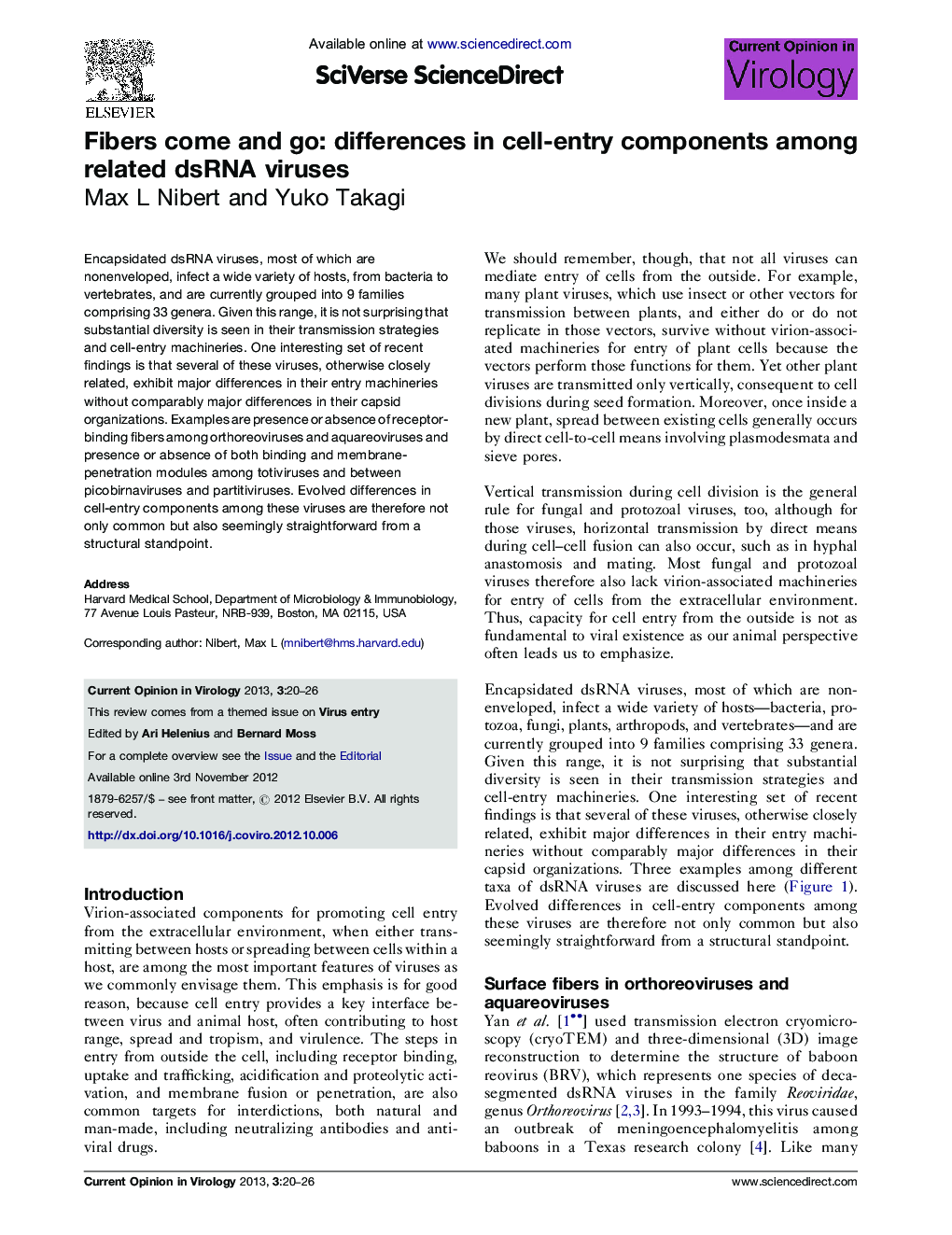| Article ID | Journal | Published Year | Pages | File Type |
|---|---|---|---|---|
| 2473519 | Current Opinion in Virology | 2013 | 7 Pages |
Encapsidated dsRNA viruses, most of which are nonenveloped, infect a wide variety of hosts, from bacteria to vertebrates, and are currently grouped into 9 families comprising 33 genera. Given this range, it is not surprising that substantial diversity is seen in their transmission strategies and cell-entry machineries. One interesting set of recent findings is that several of these viruses, otherwise closely related, exhibit major differences in their entry machineries without comparably major differences in their capsid organizations. Examples are presence or absence of receptor-binding fibers among orthoreoviruses and aquareoviruses and presence or absence of both binding and membrane-penetration modules among totiviruses and between picobirnaviruses and partitiviruses. Evolved differences in cell-entry components among these viruses are therefore not only common but also seemingly straightforward from a structural standpoint.
Graphical abstractFigure optionsDownload full-size imageDownload as PowerPoint slideHighlights► Some related dsRNA viruses differ in entry machineries, but not capsid organizations. ► Orthoreoviruses and aquareoviruses have or lack adhesion fibers. ► Totiviruses have or lack both adhesion and penetration modules. ► Picobirnaviruses and partitiviruses, too, have or lack both these types of modules. ► Evolved differences in entry machineries are common and seemingly straightforward.
